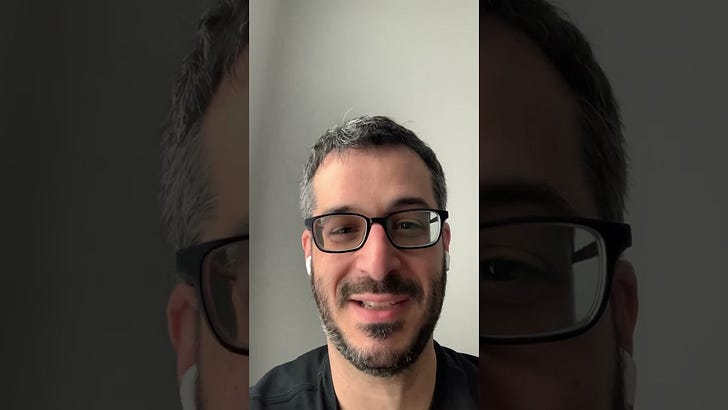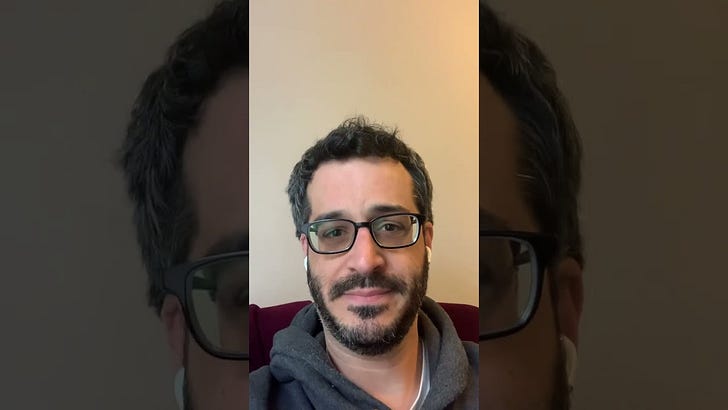Cześć!
It’s a big week for crypto. You know what’s happening this week, right?
It’s Taipei Blockchain week!!!
No, Mark, it’s the US Federal Open Market Committee meeting and all that goes with it.
Oh, right, we still live in a world where your financial fate depends on the decisions of the seven Americans on the Federal Reserve Board of Governors.
Yes, this week the US government will release its official data on inflation and retail sales for last month. In between those releases, the US central bank will raise rates by at least 50 basis points.
Bonus: on December 13, committees in both houses of US Congress will “investigate” the FTX debacle. You can catch the House and Senate hearings:
Senate Banking Committee hearing, Crypto Crash: Why the FTX Bubble Burst and the Harm to Consumers
House Committee on Financial Services hearing, Investigating the Collapse of FTX, Part I
I put “investigate” in quotes because Congressional hearings are all theater. Just look at the lists of witnesses.
The real work happens away from the public’s view. Hearings are mostly Congress’s way of getting “experts” to say the things each member wants to hear to justify whatever position each member wants to take. Though it would be interesting if SBF takes the fifth.
Make sure you got my market update for December 7, 2022.
Scroll down for a poll, two articles, a podcast, a meme, and my jobs corner.
The Tether Typhoon is About to Make Landfall (Or Not)
For a long time, I’ve assumed that powerful people and criminal enterprises use USDT. That’s the reason Tether doesn’t do audits. It doesn’t want its own version of the Panama Papers (which exposed illicit and illegal money flows among global elites and criminals using the legacy financial system).
In other words, Tether is shady but solvent. When those types of people need to cash out, Tether knows that they’d better have every penny handy. Their lives literally depend on it. They have the backing that they need.
How do I know?
I don’t, I made that up. It’s pure fantasy, not a shred of evidence, but until Tether gives us the transparency they’ve promised, we can speculate forever.
(Also, some people will not believe the truth even after they get it.)
Patrick Tan offers a less sinister but more reasonable idea based on facts and circumstances, not my imagination.
In 2020, Jean Chalopin, the head of Tether’s banking partner, Deltec Bank, bought a small US bank. Earlier this year, it sold that bank to FTX. FTX is now bankrupt and the subject of multiple investigations.
FTX’s ownership of the US bank gives US authorities jurisdiction and legal grounds to probe the bank’s activities. If US investigators find evidence of illegal or illicit activities, they can seize or freeze whatever funds flowed through the bank, including USDT and collateral that Tether used to back those tokens.
This might incite panic among USDT holders and a race for the exits.
The irony is, you have this risk with every centralized stablecoin, even USDC. Once you hold anything that you have to redeem from a US entity, you risk its seizure. Russia found this out the hard way.
Imagine if the US government discovered a massive conspiracy by some criminal syndicate or terrorist group involving USDC (or any other stablecoin), and they froze the addresses associated with the illegal activities and all addresses that USDC went to.
Such an action would threaten the solvency of every liquidity pool and protocol that uses USDC as collateral.
Let’s hope US stablecoin legislation will address this concern.
On behalf of my son, here are 12 minutes of Messi highlights.
Sometimes I mention the notion of Web3 being served from decentralized storage platforms rather than on dedicated blockchains.
Listen to or read this interview with Arweave founder Sam Williams on The Defiant Podcast. It explores and explains the concept better than I can.
A New Model for Assessing Crypto Asset Liquidity
Bottom line: Kaiko proposed a liquidity ranking system to replace the oft-cited altcoin metric, market cap. The system would account for volume, market depth, and spreads so you can better estimate the amount of money needed to move an altcoin’s price up or down.
My take: I’m still not sure we have any good metrics for altcoins, but if you’re actively managing an altcoin portfolio, you may want to consider Kaiko’s approach.
Why we care: when investing in speculative financial technology, you want to find the most useful data. According to Kaiko, seven of the top 15 tokens had less liquidity than their market cap suggests. “Big” does not mean “safe” or “less volatile.” It’s never bad to consider an alternative viewpoint.
Jobs Corner
Chronicle Labs | Backend Engineer | Link to position
Art Blocks | Senior Project Manager | Link to position
Elixxir | Frontend React Developer | Link to position
Nansen | People Associate | Link to position
Yellow | Middle/Senior Golang Developer (with Solidity experience) | Link to position
OpenSea | On-Chain Data Analyst | Link to position
Mirror | Design Lead | Link to position
These jobs come from the ToolsForCrypto newsletter. If you’d like to post a vacancy here (for free), email mark@markhelfman.com.
Relax and enjoy the ride!













Share this post